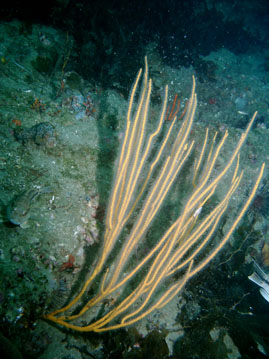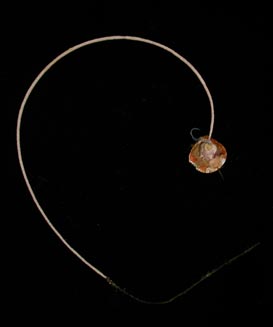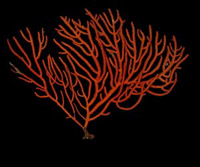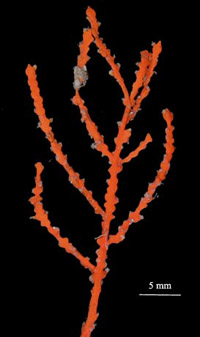CONTENTS
Introduction
The South Atlantic Bight
Methods
Octocoral Morphology
Glossary
Gorgonacean
Bauplan
Key to the Families of Octocorals in the South Atlantic Bight
Key to the Species of
Clavulariidae
Anthothelidae
Plexauridae
Gorgoniidae
Virgulariidae
Notes on the Species
Carijoa
riisei
Scleranthelia
rugosa
Telesto fruticulosa
Telesto nelleae
Telesto sanguinea
Bellonella rubistella
Pseudodrifa nigra
Nidalia occidentalis
Iciligorgia schrammi
Diodogorgia
nodulifera
Titanideum
frauenfeldii
Muricea pendula
Thesea nivea
Bebryce grandis
Bebryce parastellata
Scleracis guadalupensis
Placogorgia sp.
Leptogorgia hebes
Leptogorgia punicea
Leptogorgia
cardinalis
Leptogorgia virgulata
Leptogorgia setacea
Leptogorgia euryale
Ctenocella (Ellisella)
barbadensis
Renilla reniformis
Sclerobelemnon
theseus
Stylatula elegans
Virgularia presbytes
|
Subclass OCTOCORALLIA (=ALCYONARIA)
Order Alcyonacea Suborder Holaxonia Octocorals with unspiculated axis and often a soft,
chambered central core. Family Gorgoniidae This family has the highest diversity in the SAB
but is represented only by the genus Leptogorgia. The
pinnate branching forms of Leptogorgia found here were
at one time classified in the genus Lophogorgia, distinguished
by their asymmetrical spindles with partially fused discs. Grasshoff
(1988) found this feature to be true only of Atlantic species
and not a consistent distinction based on species described from
West Africa. As a result, he merged the Atlantic Lophogorgia
species into Leptogorgia. |
|
Key to species of Gorgoniidae in the shallow
(to 200m) South Atlantic Bight |
|
|
1a. – Colony unbranched or moderately branched, whip-like; attached or unattached ....2
|
1b. – Colony pinnately branched, branched in one plane or shrubby; always attached .................4 |
 |

 left: whip-like colony of Leptogorgia
virgulata; right: unbranched colony of Leptogorgia
setacea
left: whip-like colony of Leptogorgia
virgulata; right: unbranched colony of Leptogorgia
setacea 
